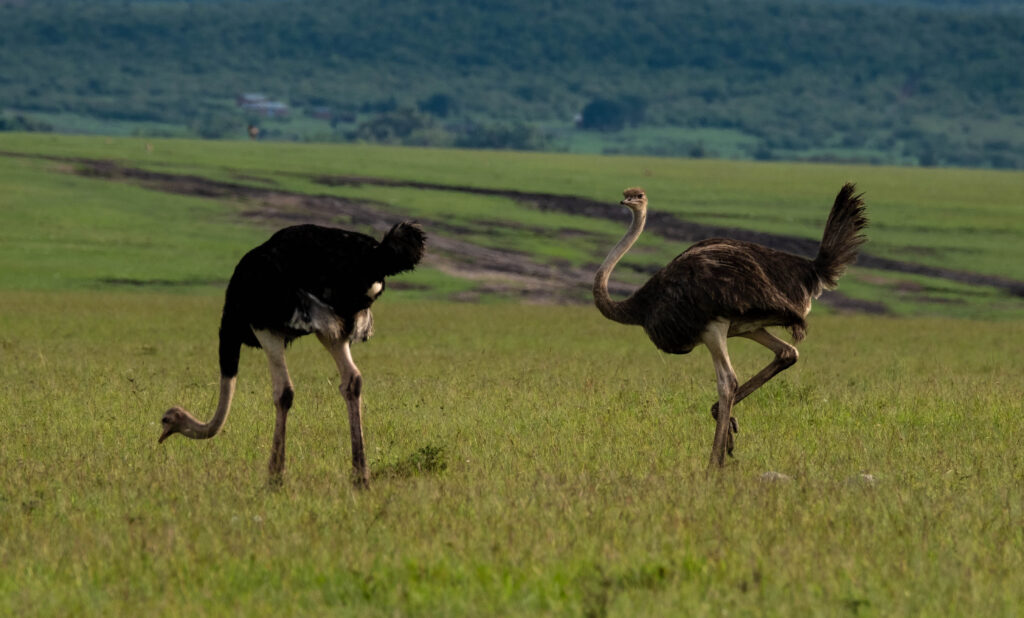Can You Still Leave Your Business When You Planned? Part II: Don’t Be An Ostrich

There is a funny myth about ostriches that claims they bury their heads in the sand so that they don’t see what is coming. Actually, this is not true at all! The truth is, when an ostrich senses danger, it drops to the ground and remains still, with its head and neck flat. From a distance, it just looks like the ostrich has buried its head in the sand.
Something else to know about ostriches: when an adult ostrich is threatened, it attacks with a clawed foot that delivers such a powerful kick that it can kill a lion.
This seems like a powerful example for business owners. When sensing danger – there are two choices. Lay down and try to hide, or stand up and attack. This is a time to stand our ground and attack the problems we face head-on. Change is swirling all around, and engaging with and becoming a part of that change is critical.
Do You Need to Adjust Your Business Model?
In Part 1 of our series, we discussed the most pressing need after triage is to stabilize your business. But at times like this, it’s not enough to stabilize and then continue as before (kind of like the ostrich dropping to the ground and remaining still). We have been in a period of significant disruption, and the recent pandemic and economic collapse have accelerated that disruption beyond anyone’s imagination. We don’t yet know which changes are permanent, but it is not too soon to begin asking how these changes are affecting your business, your customers, suppliers and the competition. How can your business kickback?
Now for the hard part. We all have to ask a very important question: “does our business model still work”? To me, business models have always been fascinating. They capture how a business makes money and is profitable. It’s the unique formula that business owners have created that makes their businesses work.
But what makes a business work does not stay constant. The model has to evolve and change as the circumstances of our business change. My goal in bringing this blindingly obvious fact up is not to provide a solution. Each business owner is uniquely equipped to provide their own solution. My goal is simply to suggest that now is an important time to take a close hard look at how we make money, whether our goods and services still address the needs of our customers and clients and what we can do to become more efficient and more responsive to our customer needs.
What’s Your New Value?
If your plan is to transition out of your business, then after you’ve stabilized and adjusted your business model so you can continue to be profitable, it’s time to understand what the value of your business is. And most important, the only perspective that matters, is how a buyer will value your business.
In this area, I can’t stress how important it is to have your business valued by a qualified appraiser or a knowledgeable investment banker. This value needs to be as accurate as possible because your plans will be based on this value. Selling your business is itself disruptive and you don’t want to begin this process only to determine down the line that you can’t sell your business for what you need to continue your life in the manner you want.
An important truth is that the business you have spent a good portion of your life building is likely the best income engine you have available to you, and if you’re going to be short cash wise when you sell your business, you are well-advised to keep that engine running a little longer.
It’s a Net Net Game
Finally, don’t focus on the sale price. That’s not your number. The real number is what’s left after you pay your debts, expenses and taxes. The real number is what you will take home. That is what you will have to work with for the next act of your life.
If you would like to read more about this topic, including Part 3 of this blog series, follow our LinkedIn Page. I look forward to your feedback and comments!
Fun Note: the photo of the beautiful ostriches above was taken by me during a Safari in East Africa this past December.

